I am building an asymmetrical matrix of values with the rows being coefficient names and the column the value of each coefficient:
# Set up Row and Column Names.
rows = c("Intercept", "actsBreaks0", "actsBreaks1","actsBreaks2","actsBreaks3","actsBreaks4","actsBreaks5","actsBreaks6",
"actsBreaks7","actsBreaks8","actsBreaks9","tBreaks0","tBreaks1","tBreaks2","tBreaks3", "unitBreaks0", "unitBreaks1",
"unitBreaks2","unitBreaks3", "covgBreaks0","covgBreaks1","covgBreaks2","covgBreaks3","covgBreaks4","covgBreaks5",
"covgBreaks6","yearBreaks2016","yearBreaks2015","yearBreaks2014","yearBreaks2013","yearBreaks2011",
"yearBreaks2010","yearBreaks2009","yearBreaks2008","yearBreaks2007","yearBreaks2006","yearBreaks2005",
"yearBreaks2004","yearBreaks2003","yearBreaks2002","yearBreaks2001","yearBreaks2000","yearBreaks1999",
"yearBreaks1998","plugBump0","plugBump1","plugBump2","plugBump3")
cols = c("Value")
# Build Matrix
matrix1 <- matrix(c(1:48), nrow = 48, ncol = 1, byrow = TRUE, dimnames = list(rows,cols))
output:
> matrix1
Value
Intercept 1
actsBreaks0 2
actsBreaks1 3
actsBreaks2 4
actsBreaks3 5
actsBreaks4 6
actsBreaks5 7
actsBreaks6 8
actsBreaks7 9
actsBreaks8 10
actsBreaks9 11
tBreaks0 12
tBreaks1 13
tBreaks2 14
tBreaks3 15
unitBreaks0 16
unitBreaks1 17
unitBreaks2 18
unitBreaks3 19
covgBreaks0 20
covgBreaks1 21
covgBreaks2 22
covgBreaks3 23
covgBreaks4 24
covgBreaks5 25
covgBreaks6 26
yearBreaks2016 27
yearBreaks2015 28
yearBreaks2014 29
yearBreaks2013 30
yearBreaks2011 31
yearBreaks2010 32
yearBreaks2009 33
yearBreaks2008 34
yearBreaks2007 35
yearBreaks2006 36
yearBreaks2005 37
yearBreaks2004 38
yearBreaks2003 39
yearBreaks2002 40
yearBreaks2001 41
yearBreaks2000 42
yearBreaks1999 43
yearBreaks1998 44
plugBump0 45
plugBump1 46
plugBump2 47
plugBump3 48
and I wish to extract certain rows that share row names (i.e. all rows with "unitBreaks'x'") into a submatrix.
I tried this
est_actsBreaks <- est_coef_mtrx[c("actsBreaks0","actsBreaks1","actsBreaks2","actsBreaks3",
"actsBreaks4","actsBreaks5","actsBreaks6","actsBreaks7",
"actsBreaks8","actsBreaks9"),c("Value")]
but it returns a vector and I need a matrix. I have seen other questions concerning similar procedures but their columns and rows all had identical names and/or values. Is there a way to do the operation I have in mind, such as grep()?

